
Publications
Photo Credit (top image): Chris Henry / Unsplash
Informing Philadelphia: Strengths and Gaps in Local Media’s Coverage of Critical Information Needs

Our newest publication by Dr. Hendrik Theine, post-doctoral researcher at the Institute for Comprehensive Analysis of the Economy (ICAE) and Carlotta Verita, a pre-doctoral researcher at the Institute for Comprehensive Analysis of the Economy (ICAE), looks at how well Philadelphia’s local news media keep residents informed about the issues that matter most for everyday life. Local news plays a vital role in helping people stay safe, healthy, and connected to their communities. But in recent years, newsrooms across the country have faced shrinking budgets, staff cuts, and growing competition from digital platforms. To understand what this means for Philadelphia, we analyzed over 6,000 news stories from 15 local media outlets published in summer 2024. Using structural topic modeling, we examined: Which topics get the most coverage, how much of the news is truly local, and how ownership and media type shape editorial decisions. This research was made possible by a grant from Independence Public Media Foundation.
Is Another AI Possible? Platforms, Political Economies, and Alternatives
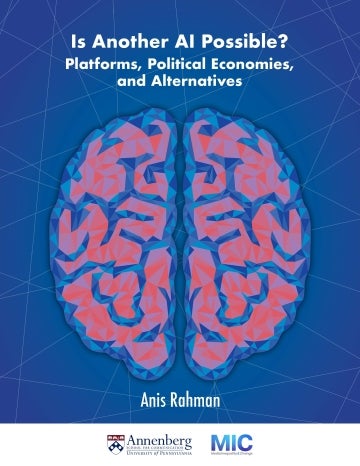
This publication by Dr. Anis Rahman, Assistant Teaching Professor in the Department of Communication at the University of Washington, examines the political economy of big tech AI, critiquing its industrial and regulatory capture while exploring alternative pathways that center the public interest over corporate profit. These alternatives include public utility and cooperative models, government–civil society collaborations, and Indigenous approaches to decolonial AI.
AI is rapidly transforming industries, economies, and societies, offering promising advances in healthcare, education, climate solutions, and beyond. Yet beneath its transformative potential lies a troubling reality: AI’s development and deployment are largely controlled by a few powerful tech corporations, with very little public oversight. This concentration of power reinforces longstanding patterns of bias, inequality, labor and data exploitation, invasive surveillance, and environmental harm.

Public & Local Media Studies
Over the years, MIC co-directors and affiliates have been researching and publishing studies on public media as a tool for underserved communities and its effectiveness in bolstering democracy and journalism. The following analyses of the various institutions that make up public media systems provide a clear understanding of the financial and structural elements putting local news at risk. Using this research, the authors of the following publications have developed promising solutions to the local journalism crisis.
April 2024

As the state of U.S. local journalism continues to deteriorate, contributing to growing news deserts and the proliferation of mis- and disinformation, alternative models for sustaining local news are increasingly paramount. One such alternative to the failing commercial model that deserves more attention, we argue, is the American public media system. While less robust than its international counterparts, the U.S. public media system tends to be less reliant on market support, less subject to commercial pressures, and more devoted to a universal service mission.
This study explores to what extent the American public media system may serve to lessen the severity of the local journalism crisis. Drawing on interviews and conversations with two dozen public media practitioners and analysts, our research examines how public media could be reimagined and repurposed to better serve local information needs. We conclude that a renewed investment in the existing system in tandem with structural reforms presents a possible pathway towards a more sustainable future for local news.
September 2023

Amid the retreat of local journalism and the resulting emergence of “news deserts,” where communities lack authentic and civically accountable sources of news, it is important to not only seek new revenue streams for news organizations but also to consider how financial resources and institutional structures secure journalistic autonomy and an abiding dedication to public service.
Surveying initiatives to bolster local reporting in multiple countries, this study finds that such efforts frequently rest on an unstated optimism that market failures can be corrected and that new, sustainable business models ultimately will solve the journalism crisis. In contrast to these stopgap interventions, initiatives based on public service media principles found in the world's healthiest democracies—such as providing information across all social groups and fostering civic engagement—are better positioned to rebuild local systems in which news media are structured as enduring social institutions with crucial roles to play in democratic processes.
August 2022
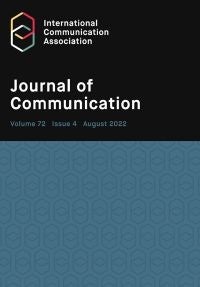
This study builds a multi-dimensional framework for assessing local media systems to identify potential gaps in news provision, especially among socioeconomically marginalized communities. We gather data on income, education, and age of audiences and coverage areas for 38 news outlets in Philadelphia and conduct a content analysis to gauge how these outlets meet critical information needs related to the COVID-19 pandemic. Findings indicate that multiple dimensions of Philadelphia’s news media system—audience size and socioeconomics, staffing levels, forms of ownership, and platform effects—work together to underserve communities with lower levels of income and education and that this structural gap generates a measurable gap in the provision of news content meeting the critical information needs of these communities. Policy interventions such as public funding and subsidies can enhance the capacity for Philadelphia news organizations to meet the critical information needs of marginalized communities.
2022

The COVID-19 pandemic precipitated attention to the public consequences of digital exclusion and to local, state, and federal emergency digital inclusion efforts. In this case study, we examine private sector, municipal government, and nonprofit efforts to close the divide during the pandemic in Philadelphia, which has one of the worst urban connectivity rates in the United States. Drawing on news accounts, policy documents, and interviews with city staff, we assess Philadelphia’s digital inclusion efforts during the pandemic. Our findings show that inclusion efforts faced challenging logistics, limited data on the unconnected, funding concerns, and sometimes pushback from Internet service providers (ISPs). The latter were by necessity crucial partners in connectivity efforts but failed to address basic digital access gaps without significant public and governmental pressure, signaling the need for public alternatives. Our analysis foregrounds the disconnect among well-resourced ISPs, connectivity gaps marked by digital redlining in the poorest communities, and political constraints on robust public broadband policy.
December 2021
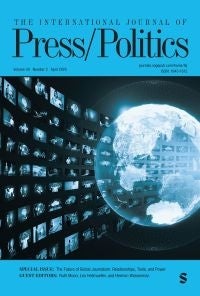
This study examines whether and how public media systems contribute to the health of democracies in 33 countries in Europe, Africa, Asia, North America, the Middle East, Latin America, and South America. We gather national economic data and public media funding levels, audience shares, and regulatory data, primarily for 2018 and 2019 but in some cases earlier, due to lack of available data. We then assess correlations with strength of democracy indices and extend Hallin and Mancini's typology of North American and European media systems through hierarchical cluster analysis of these 33 countries.
We find five models of public media systems around the world, ranging from “state-administered” systems with low levels of independence (Botswana and Tunisia) to systems aligning with Hallin and Mancini's “Democratic Corporatist” model, with strong and secure (multiyear) funding, large audience shares, and strong regulatory protection for their independence. In between, we identify three mixed models: a “Liberal-Pluralist” model, a “Direct Funding” model, and a “Commercial–Public” model. Correlations and cluster analyses show that high levels of secure funding for public media systems and strong structural protections for the political and economic independence of those systems are consistently and positively correlated with healthy democracies.
Promising Partnerships
An Interactive Map of Public and Commercial Media Working Together
Victoria Feng and Conor Smith, two undergraduate students at Penn, led this research project mapping out collaborations between public media and local news outlets across the United States.
The public media system is crucial for Americans, reaching almost 99% of people with free and often high-quality programming. At the same time, local newspapers have faced growing financial challenges despite being associated with higher voter engagement and lower political polarization. For the past few months, we have been researching partnerships between public media and commercial local news outlets as publications seek to combine resources.
We found over 20 partnerships across the United States. In 2022, Chicago Public Media acquired the Chicago Sun-Times for $61 million, a move that the Northwestern Local News Initiative labeled one of the most ambitious partnerships to date. The result? Digital audience growth and stronger investigative reporting capabilities. There have also been partnerships where public media outlets and commercial news outlets share information, such as the Collaborative Detroit Newsrooms network.
And here in Philadelphia, public radio station WHYY has worked with a variety of other local news outlets. In 2011, WHYY collaborated with NBC10 on innovative newsgathering methods. And in 2019, it acquired digital news startup Billy Penn.
Click on the states in the interactive map below for more information about each partnership.
In addition to the map, on April 7, 2025, Victoria Feng and Conor Smith held a panel on public media at the Kelly Writers House featuring MIC Co-Director and Annenberg professor Victor Pickard, Penn Creative Writing lecturer and journalist Matt Katz, and WHYY Executive Vice President and President of New Ventures and Enterprises Kyra McGrath (L’81). The panel, which was covered by the Daily Pennsylvanian, focused on the history of public media in the U.S., what it’s like working at a public media outlet, and current threats to PBS and NPR.
Billings, Sandi. “Northwest Public Broadcasting Launches Health Care Reporting Initiative.” Northwest Public Broadcasting, 27 Jan. 2022, www.nwpb.org/2022/01/27/northwest-public-broadcasting-launches-health-care-reporting-initiative/.
Brod, Robby. “What You Need to Know about WITF’s New Partnership with LNP | LancasterOnline.” WITF, 28 Apr. 2023, www.witf.org/2023/04/28/what-you-need-to-know-about-witfs-new-partnership-with-lnp-lancasteronline/.
Colorado Public Radio Staff. “Colorado Public Radio Acquires News Website Denverite.” Colorado Public Radio, 6 Mar. 2019, www.cpr.org/2019/03/06/colorado-public-radio-acquires-news-website-denverite/.
“Community News Collaborative.” WUSF, www.wusf.org/community-news-collaborative. Accessed 23 Apr. 2025.
“Delaware Journalism Collaborative Launches to Address Community Polarization.” Cape Gazette, 25 May 2022, www.capegazette.com/article/delaware-journalism-collaborative-launches-address-community-polarization/240651.
Epler, Patti. “Civil Beat Is Partnering With Hawaii News Now.” Honolulu Civil Beat, 4 Mar. 2020, www.civilbeat.org/2020/03/civil-beat-is-partnering-with-hawaii-news-now/.
Fuller, Austin. “Connecticut Public Lands Knight Grant for Puerto Rico Partnership.” Current, 13 Jan. 2025, current.org/2025/01/connecticut-public-lands-knight-grant-for-puerto-rico-partnership/.
“KERA Completes Acquisition of the Denton Record-Chronicle.” KERA, 7 Aug. 2023, www.kera.org/2023/08/07/kera-completes-acquisition-of-the-denton-record-chronicle/.
“LAist and CBS Los Angeles Expand Local Coverage Through Newsroom Partnership.” LAist, 7 Jan. 2025, laist.com/press-releases/laist-and-cbs-los-angeles-expand-local-coverage-through-newsroom-partnership.
Lane, Mary Anne. “GPB Renews Long-Term Partnership With Discovery Education Creating Digital Learning Environments Statewide.” Georgia Public Broadcasting, 22 Mar. 2018, www.gpb.org/blogs/education-matters/2018/03/22/gpb-renews-long-term-partnership-discovery-education-creating.
Mimidis, Courtney. “NBC10 Announces New Partnership With WHYY.” NBC10 Philadelphia, 6 Dec. 2011, www.nbcphiladelphia.com/news/local/nbc10-announces-new-partnership-with-whyy/1917761/.
Morell, Claudia. “With $61 Million Raised for the Deal, Chicago Public Media Acquires the Sun-Times.” WBEZ, 31 Jan. 2022, www.wbez.org/culture-the-arts/2022/01/31/chicago-public-media-acquires-chicago-sun-times.
Nebraska Public Media News staff. “Nebraska Public Media to Broadcast 2nd Congressional District Debate.” Nebraska Public Media, 18 Sept. 2024, nebraskapublicmedia.org/es/about/pressroom/press-releases/nebraska-public-media-and-partners-to-broadcast-1st-district-congressional-debate/.
“NJ News Commons.” Center for Cooperative Media, centerforcooperativemedia.org/njnewscommons/. Accessed 23 Apr. 2025.
Ogilvie, Caleb. “Alaska Public Media to Expand Reach through Acquisition of TV Station.” Current, 20 Dec. 2024, current.org/2024/12/alaska-public-media-to-expand-broadcast-reach-through-acquisition-of-tv-station/.
“OPB Editorial Partnerships.” OPB, www.opb.org/partnerships/. Accessed 23 Apr. 2025.
“Our Newsroom Partners.” Outlier Media, outliermedia.org/about/newsroom-partners/. Accessed 23 Apr. 2025.
“Partners.” Granite State News Collaborative, www.collaborativenh.org/partners. Accessed 23 Apr. 2025.
Schmidt, Christine. “How Mississippi Today and WLBT Balance Data and Broadcast Needs While Co-Investigating Stories.” Nieman Lab, 25 Feb. 2019, www.niemanlab.org/2019/02/how-mississippi-today-and-wlbt-balance-data-and-broadcast-needs-while-co-investigating-stories/.
“Sinclair and Nebraska Public Media Announce Launch of First Station Offering Free Virtual Channel Hosting in ATSC 3.0.” Business Wire, 16 Oct. 2024, www.businesswire.com/news/home/20241016288080/en/Sinclair-and-Nebraska-Public-Media-Announce-Launch-of-First-Station-Offering-Free-Virtual-Channel-Hosting-in-ATSC-3.0.
“The Baltimore Banner and WYPR Announce Partnership to Strengthen Local News In Maryland.” WYPR, 19 May 2022, www.wypr.org/2022-05-19/the-baltimore-banner-and-wypr-announce-partnership-to-strengthen-local-news-in-maryland.
Wolfman-Arent, Avi. “WHYY Acquires Local News Site Billy Penn.” WHYY, 15 Apr. 2019, whyy.org/articles/whyy-acquires-local-news-site-billy-penn/.
MIC Co-Director Publications
August 2022
In "Democratizing the platforms: Promises and perils of public utility regulation," Victor Pickard discusses the various options for bringing the “extremely commercialized” digital platforms under democratic control and examines their viability.
Read "Democratizing the platforms: Promises and perils of public utility regulation"
March 2020

The power of hashtag activism became clear in 2011, when #IranElection served as an organizing tool for Iranians protesting a disputed election and offered a global audience a front-row seat to a nascent revolution. Since then, activists have used a variety of hashtags, including #JusticeForTrayvon, #BlackLivesMatter, #YesAllWomen, and #MeToo to advocate, mobilize, and communicate. In this book, Sarah Jackson, Moya Bailey, and Brooke Foucault Welles explore how and why Twitter has become an important platform for historically disenfranchised populations, including Black Americans, women, and transgender people. They show how marginalized groups, long excluded from elite media spaces, have used Twitter hashtags to advance counternarratives, preempt political spin, and build diverse networks of dissent.
Read "#HashtagActivism: Networks of Race and Gender Justice" for free on MIT Press Direct.
December 2019
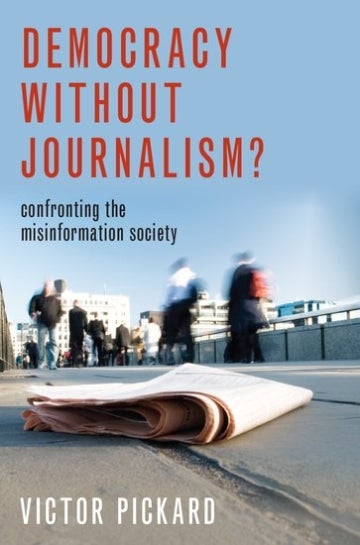
The first scholarly book to historicize the current American journalism crisis and situate it within long-term structural problems that plague the entire commercial news industry.
A timely intervention that brings normative questions about journalism’s democratic imperatives back into focus and proposes structural alternatives to today’s failing commercial news models.
Scrutinizes major transformations in American journalism while offering policy proposals for creating a more democratic media system.
Click here to watch a video of Pickard describing the book.
View "Democracy without Journalism?: Confronting the Misinformation Society"
October 2019
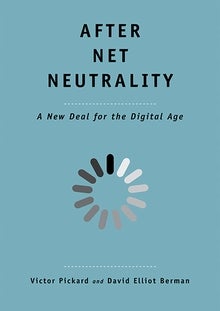
This short book is a provocative analysis of net neutrality and a call to democratize online communication. It functions as both a primer that explains the history and politics of net neutrality and an argument for a more equitable framework for regulating access to the internet. Pickard and Berman argue that we should not see internet service as a commodity but as a public good necessary for sustaining democratic society in the twenty-first century. They aim to reframe the threat to net neutrality as more than a conflict between digital leviathans like Google and internet service providers like Comcast but as part of a much wider project to commercialize the public sphere and undermine the free speech essential for democracy. Readers will come away with a better understanding of the key concepts underpinning the net neutrality battle and rallying points for future action to democratize online communication.
December 2018
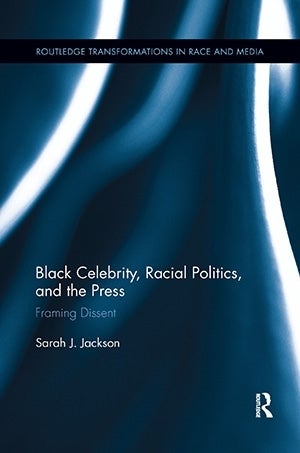
Shifting understandings and ongoing conversations about race, celebrity, and protest in the twenty-first century call for a closer examination of the evolution of dissent by black celebrities and their reception in the public sphere. This book focuses on the way the mainstream and black press have covered cases of controversial political dissent by African American celebrities from Paul Robeson to Kanye West. Jackson considers the following questions: 1) What unique agency is available to celebrities with racialized identities to present critiques of American culture? 2) How have journalists in both the mainstream and black press limited or facilitated this agency through framing? What does this say about the varying role of journalism in American racial politics? 3) How have framing trends regarding these figures shifted from the mid-twentieth century to the twenty-first century? Through a series of case studies that also includes Eartha Kitt, Sister Souljah, and Mahmoud Abdul-Rauf, Jackson illustrates the shifting public narratives and historical moments that both limit and enable African American celebrities in the wake of making public politicized statements that critique the accepted racial, economic, and military systems in the United States.
December 2014
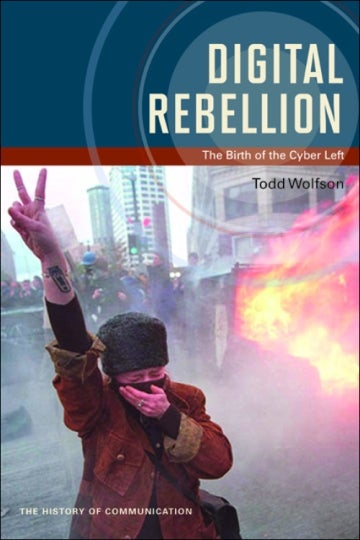
Digital Rebellion examines the impact of new media and communication technologies on the spatial, strategic, and organizational fabric of social movements.
Todd Wolfson begins with the rise of the Zapatistas in the mid-1990s, and how aspects of the movement–network organizational structure, participatory democratic governance, and the use of communication tools as a binding agent–became essential parts of Indymedia and all Cyber Left organizations. From there he uses oral interviews and other rich ethnographic data to chart the media-based think tanks and experiments that continued the Cyber Left’s evolution through the Independent Media Center’s birth around the 1999 WTO protests in Seattle.
After examining the historical antecedents and rise of the global Indymedia network, Wolfson melds virtual and traditional ethnographic practice to explore the Cyber Left’s cultural logic, mapping the social, spatial and communicative structure of the Indymedia network and detailing its operations on the local, national and global level. He also looks at the participatory democracy that governs global social movements and the ways the movement’s twin ideologies, democracy and decentralization, have come into tension, and how what he calls the switchboard of struggle conducts stories of shared struggle from the hyper-local and dispersed worldwide. As Wolfson shows, understanding the intersection of Indymedia and the Global Social Justice Movement illuminates their foundational role in the Occupy struggle, Arab Spring uprising, and the other emergent movements that have in recent years re-energized radical politics.
October 2014

How did the American media system become what it is today? Why do American media have so few public interest regulations compared with other democratic nations? How did the system become dominated by a few corporations, and why are structural problems like market failures routinely avoided in media policy discourse? By tracing the answers to many of these questions back to media policy battles in the 1940s, this book explains how this happened and why it matters today. Drawing from extensive archival research, the book uncovers the American media system’s historical roots and normative foundations. It charts the rise and fall of a forgotten media reform movement to recover alternatives and paths not taken. As much about the present and future as it is about the past, the book proposes policies for remaking media based on democratic values for the digital age.
Other Publications

Gannett and the News: Death by a Thousand Paper Cuts
Arijit Paladhi
This report examines Gannett, the largest newspaper chain in the United States, and its significant influence on local journalism, democracy, and its workforce. It critically dissects Gannett’s mergers and labor policies, showing how profit-driven motives lead to news standardization and jeopardizes the press’s role as well as its democratic duties.

Social Media In/After Neoliberalism: Mapping Changing Attitudes Toward Platforms at the Milton Wolf Seminar
David Elliot Berman
This report maps the emergence of a new consensus regarding the impact of social media on democracy at the 2023 Milton Wolf Seminar on Media and Diplomacy.

Policing 2020: Local news reporting during a year of racial justice protests
Susanna Dilliplane, Louisa Lincoln & Briar Smith
In 2020, racial justice took center stage in U.S. public discourse as massive numbers of people took to the streets to protest police brutality and systemic racism in policing and in American society more broadly.

A State Sale: Nevada’s Thrall to Tech Extraction
Francesca N. Petrucci
This report examines Blockchains, LLC’s ambitions in Nevada to build a modern-day self-governed cryptocurrency company town, subsidized by the state on nearly every level. The report also assesses how big tech converges with a burgeoning Tech labor rebellion, contending with issues of worker surveillance and mechanization.

An Unfinished Rebellion: Narrative and Structural Change in Philadelphia
Malav Kanuga
“An Unfinished Rebellion” analyzes narrative and media-based organizing in Philadelphia around issues of policing and public safety in the wake of the 2020 protests following the murder of George Floyd and Breonna Taylor. The report describes coordinated initiatives around community narrative power as an integral part of existing and emerging citywide coalitions.

Community Media in a Digital Age: A Conversation with DeeDee Halleck
Antoine Haywood
In July 2007, I attended my second Alliance for Community Media (ACM) national conference. While many community access television practitioners at this convening were fretting implications of, then, newly enacted statewide video franchise statues, all I wanted to do was talk shop about youth media.

The View from Journalism's Post-Crisis Generation Navigating Precarity and Opportunity in Philadelphia and Cincinnati
Brian Creech & Robert Bodle
This report examines the relationship between the health of a local news ecosystem and the precarity felt by individual news workers in Philadelphia and Cincinnati. We identify trends in each market, as well as the major media institutions with the goal of identifying the specific opportunities and conditions our interview respondents navigate.

From Independent Contractors to an Independent Union: Building Solidarity Through Rideshare Drivers United's Digital Organizing Strategy
Brian Dolber
This report explores the viability of using social media and app-based organizing tools in building democratic gig worker organizations. The author partnered with Rideshare Drivers United-Los Angeles, a democratic and independent association of US rideshare drivers seeking fair pay, transparency, a voice on the job, and community standards in the rideshare industry.

From Pullman to Uber: Transportation Resistance in the Digital Milieu
Francesca N. Petrucci
This piece takes a historical view of labor struggles and the law to shed light on the fight of gig workers from Uber to GrubHub today. Through analysis of the Pullman strike and the broader struggle of railway workers in the 19th century, Francesca Petrucci clarifies what is new and old in the contemporary struggle around workers’ rights in the platform economy and is part of MIC’s series on the future of work.

The Right to Know or the Right to No: Public Records Laws and Investigate Journalism in Philadelphia
Muira McCammon & Daniel Grinberg
The City of Philadelphia has a transparency problem impacting its newsrooms. Between October 2018 and January 2019, we conducted 17 interviews with Pennsylvania-based journalists in order to highlight their experiences with Pennsylvania’s Right to Know (RTK) law.

Cell Phones, Security and Social Capital: Examining How Perception of Data Privacy Violations Among Cell-Mostly Internet Users Impact Attitudes and Behavior
Jan Fernback & Gwen Shaffer
This research highlights the intersection between emerging forms of digital inequity and long-standing socio-economic injustices. The authors illustrate how low-income Americans who rely on smartphones to access the internet are aware of frequent surveillance by corporations, social media platforms and the government.

The Platform Economy and the Future of the City
Aaron Shapiro
This report summarizes the Platform Economy and the Future of the City Convening held at Philadelphia’s City Hall and at the University of Pennsylvania. This convening brought together innovative thinkers from around the US and Europe and local organizers, academics, policymakers and workers in the Platform Economy.

Philadelphia Media Activism Guide
Antoine Haywood
Philadelphia is regarded popularly as a city of neighborhoods that are defined by their eclectic identities. This guide features a constellation of Philadelphia-based organizations that use media-making as a means to empower marginalized communities, amplify untold stories, and advance social equity.

Dynamic Exploits: The Science of Worker Control in the On-Demand Economy
Aaron Shapiro
This report provides a critical review of an emergent literature in management science. This research constructs complex mathematical equations and computer simulations to model on-demand marketplaces; it then uses these simulations to evaluate various price and information manipulation strategies to maximize company revenue.

Media, Movements, and the City: A Gathering of Media Activism in Philadelphia
Antoine Haywood
The trailblazing Media, Movements, and the City was organized as a result of media activism scholars and practitioners acknowledging a need for a city-wide convening. They successfully managed to leverage their resources to make Media, Movements, and the City come to fruition, which gave Philadelphians invested in media and social change work an opportunity to do groundwork in a big and meaningful way.
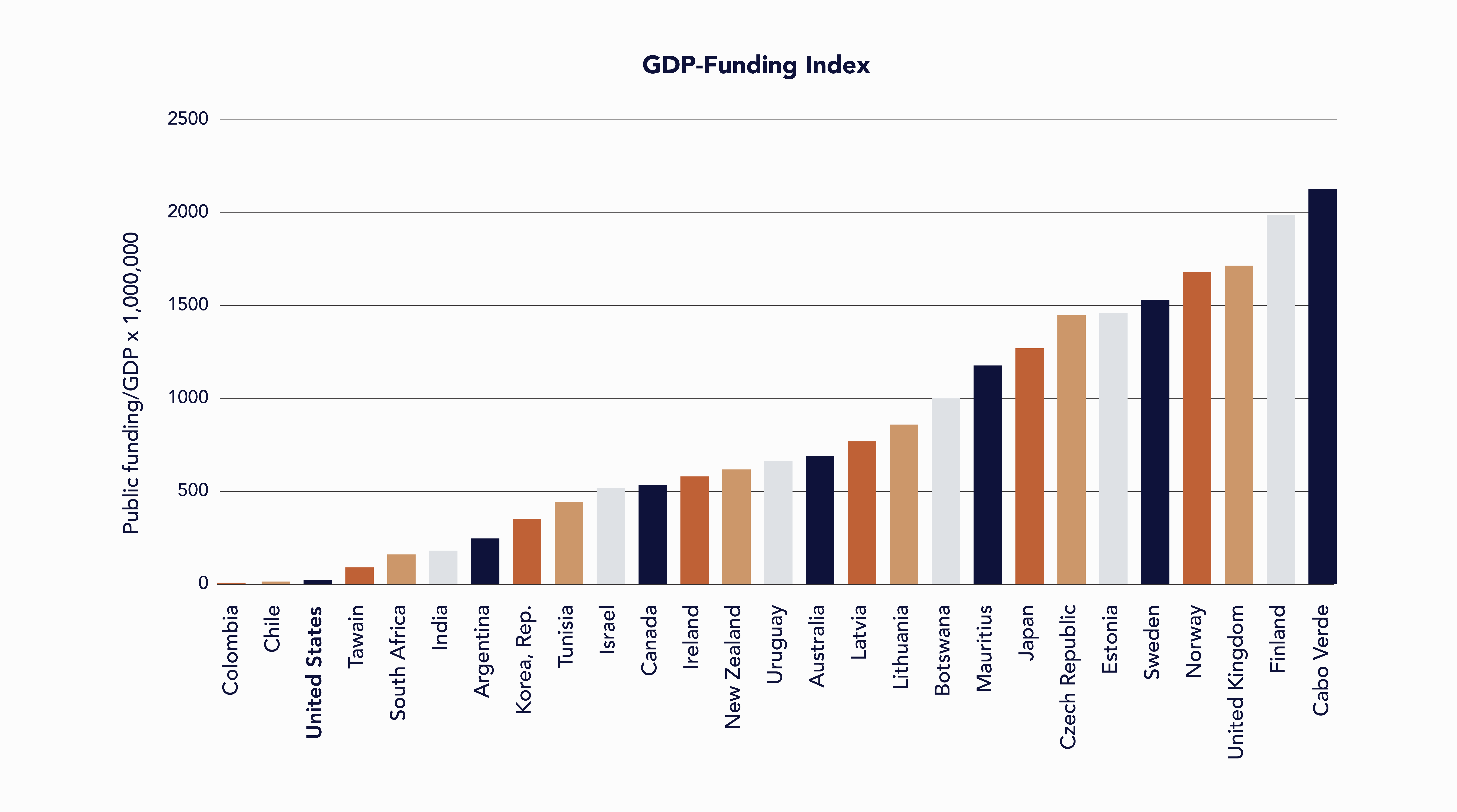
Infographic: Raising the Bar for Journalism
As the business model of for-profit journalism erodes, public-funded media is needed to improve public knowledge and political engagement and lower extreme views. Learn more about public media and how different countries support it.
